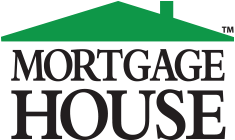Home loan fees explained


It may seem like home loan fees lurk in the dark, waiting to pounce on the unsuspecting borrower, but it is actually quite the opposite. Lenders must tell borrowers about any fees and charges before they sign up to a home loan product.
When comparing home loans, borrowers should check through the fees and charges, so they know exactly what the home loan will cost. By the time you sign on the dotted line, the home loan fees should be well and truly out of the shadows.
However, problems may arise in the communication of home loan fees. Home loan fees are usually disclosed to a borrower through product disclosure statements, on lender websites or in the loan contract itself. This is where borrowers either fail to read through this information or unfortunately do not understand what it means.
It’s an easy trap to fall into – these documents often contain copious amounts of text, and when home loan fees vary according to lender, even called different names, it can be easy to leave some home loan fees in the shadows.
In this article, we’ll take you through the common types of fees associated with a home loan to give you an idea of what to expect, and help you understand the fees before you commit to a home loan.
Application fee
This is a one-off payment due when you apply for your home loan to cover the cost of processing your application. The cost of an application fee ranges from $150 – $700, however often this fee may be refunded or waived altogether as part of a special promotion.
Also called: establishment fee, start-up fee, set-up fee
Valuation fee
As part of your home loan, a lender will need to assess the value of your property. This assessment is usually performed by a third party and a valuation fee covers this cost. A valuation fee will depend upon location and is usually quoted upon application, but costs range between $100 – $300. This is another upfront fee.
Lenders Mortgage Insurance (LMI)
If you are borrowing more than 80% of the value of your property you will be required to take out Lenders Mortgage Insurance (LMI), which protects your lender should you default on the home loan. A lender usually charges a one-off fee to cover LMI which is usually determined by your loan to value ratio (LVR).
Rate lock fee
A rate lock fee allows you to secure a lender’s advertised interest rate for a given period, so if interest rates rise you can still take advantage of the previous interest rate.
Monthly fees
A monthly fee falls into the category of ongoing fees. A monthly fee is charged on a monthly basis to cover the cost of administering the home loan. If your lender charges a monthly fee the cost may range from $5-$15.
Also called: service fees, administration fees
Package fees
A package home loan allows a borrower to combine their home loan, bank account and/or other financial products and gives them access to interest rate discounts and special deals. In exchange for this, a lender may charge an annual package fee which ranges in price from $300 – $400.
Also called: annual fees
Circumstantial fees
Also in the category of ongoing fees are those fees that are incurred under certain circumstances. Examples of these fees include:
- Additional repayments – some home loans may incur a fee when you make additional repayments
- Redraw fees – Withdrawing money using a redraw facility may incur a fee under some home loans
- Late payment – a lender may charge you for making a late repayment. This is also called a default fee
- Switching fee – if you decide to switch between a fixed or variable interest rate you may be charged a fee
- Portability fee – home loans that allow you to take your home loan with you when you move house may charge a fee to do so
Refinancing fee
A refinancing fee may be charged when you decide to refinance to a new loan product or lender.
Discharge fee
A discharge fee is similar to the application fee, but it is a one-off fee due at the end of your home loan when you have paid in full. The discharge fee covers the cost of processing paperwork and finalising all aspects of the loan. A lender may charge $150-$500.
Also called: termination fee
Settlement fees
A settlement fee is incurred when a borrower pays out their home loan early, such as in the first five years. A settlement fee is designed to cover any loss a lender may incur as a result of you terminating the loan early.
Also called: early-exit fees, deferred establishment fees, early termination fees, early discharge fees, deferred application fees. A Settlement fee should not be confused with an Exit fee, which is explained next.
Exit fees
Not to be confused with an Early Exit fee, Exit fees were banned on all new loans from 1 July 2011. Exit fees may still be charged on loans entered into before this date, but most lenders have removed these fees.
Break fee
A break fee is incurred when you terminate a fixed rate mortgage. A break fee will be determined by interest rates and how much they have decreased during the time you had the fixed rate loan. As a result the cost of a break fee may be very high.
Mortgage House
At Mortgage House, we’re no strangers to the homeowner’s journey. It’s a long (but rewarding) one. If you’re thinking of applying for a home loan, you can Apply Online today to get started!
